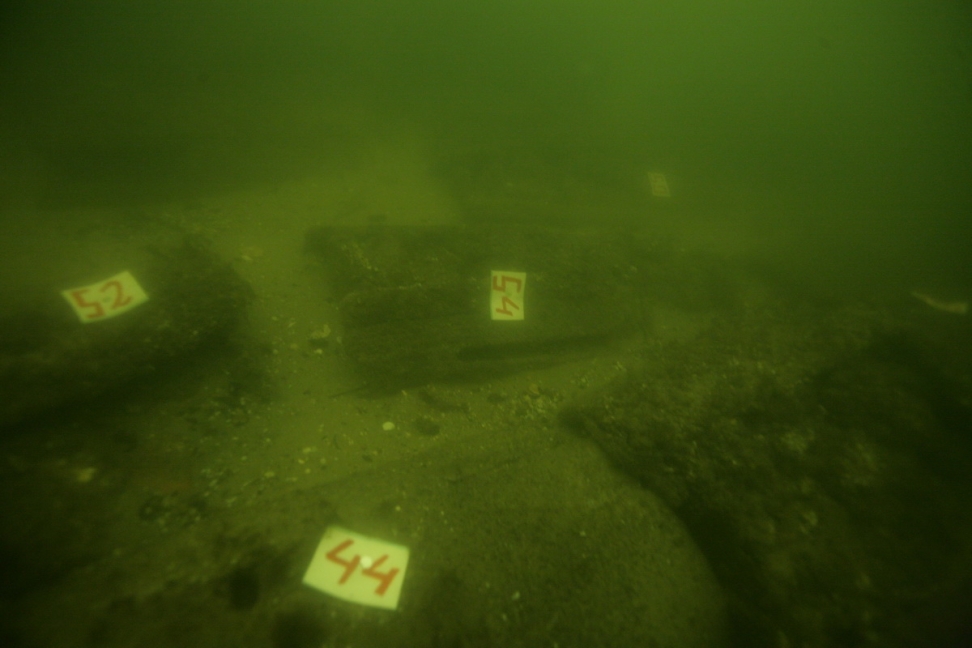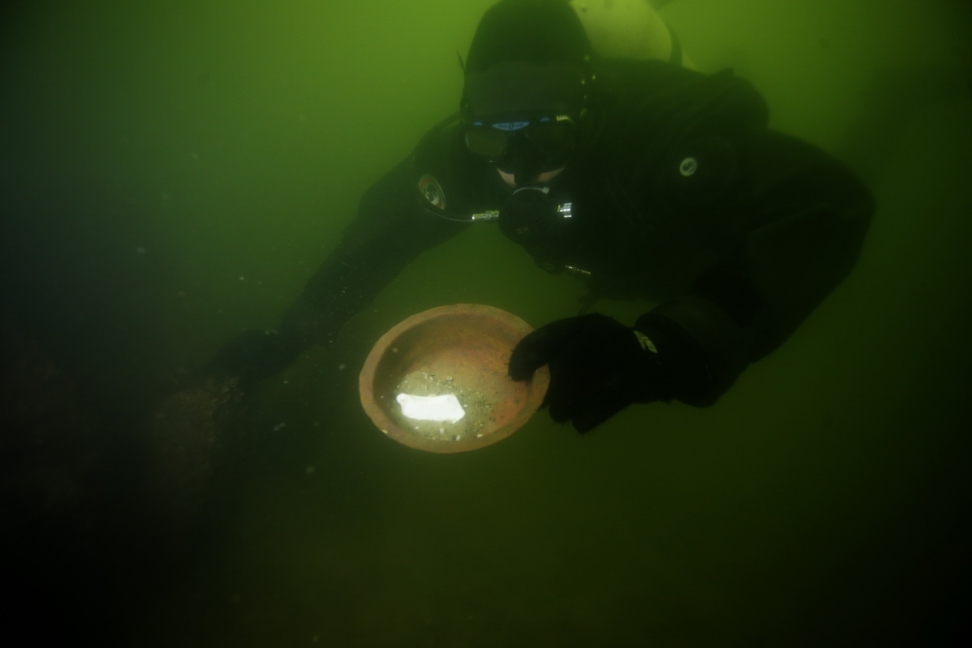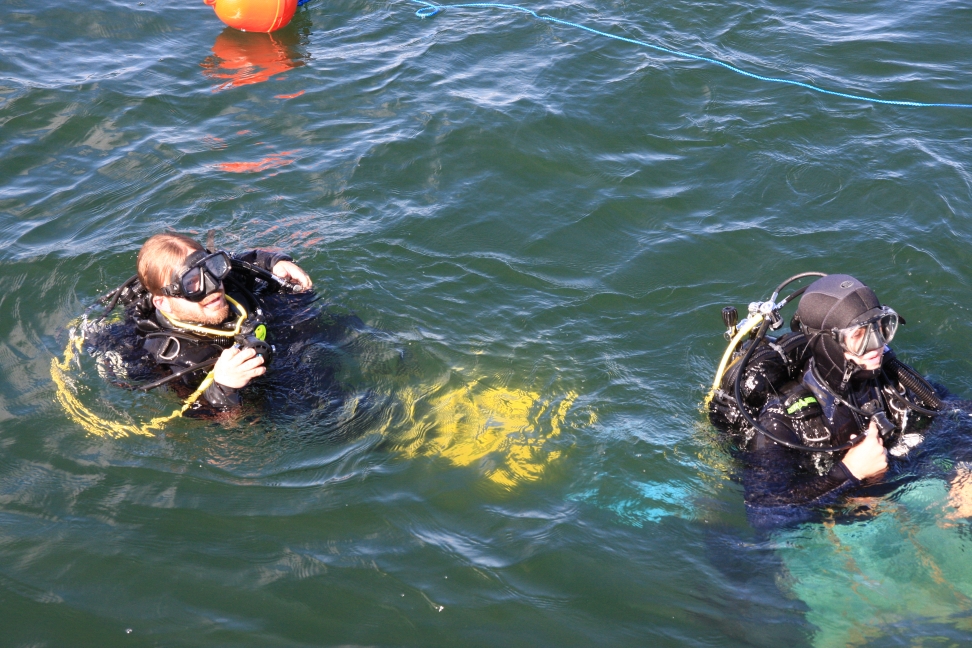UNESCO Underwater Archaeology Workshop in Gdańsk
On the 24th we were welcomed by the director of the Polish Maritime Museum – Dr. Jerzy Litwin – and guided by Dr. Waldemar Ossowski through the exhibitions, of which one of the major exhibits is the late medieval Copper Wreck (W5) and its cargo. It was striking from the start to see to what great extent this museum was focused on maritime archaeology. While many other national maritime museums tend to pursue a more historical approach and preserve vessels built after the industrial revolution, or even become an art gallery, this maritime museum is dedicated to archaeology, with an active diving unit. This resulted in a much better representation of the prehistoric and medieval maritime past. Later we learned that the maritime archaeologists working at this museum even had a sizable research vessel on their disposal and cooperate with the navy and oceanographers, resulting in numerous campaigns of active research.
On the 25th the group visited the Department of Marine Geology at the Institute of Oceanography in Gdynia, where lectures were held by Dr. Leszek Łęczyński on the activities of his department, legislation and funding, and finally, marine geomorphology and its relevance to our field. We were given an introduction of how core samples retrieved from the sea-bed are analyzed. The context sheets of marine geologists are in fact not so distinctive to those of archaeologists. The session was accompanied by journalists of the local TV station of Gdańsk; surely such an international workshop in such an interesting field is not an everyday occurrence. Later the Polish fully rigged training ship DAR POMORZA was visited – built at Blohm&Voss in Hamburg in 1909 – where we were guided by an old sea bear who used to be a sailor himself on this vessel.
On the 26th we had finally our first dive mission in Polish waters. We were to investigate a find’s report from a lake, in which a logboat had been found. First and foremost it was an interesting team experience: We were six divers from various countries and various levels of experience and, what is more, never dived together in this constellation. Especially in this situation a clear hierarchy was much wanted for, but eventually, after some confusion, virtually nil visibility due to the whirled up fine lake sediments, the logboat was lifted and pushed to the bank. Here it was recorded by Dr. Waldemar Ossowski and some students and samples were taken.
On the 27th we investigated another shipwreck under the direction of Dr. Waldemar Ossowski, which location is still being kept secret to ensure that the site is not pillaged. The side-scan sonar image showed the middle portion of the hull laden with barrels and iron staves. All barrels seem to contain iron ore, the barrels are covered by concretions. Beforehand the team prepared some labels, with which each barrel was to be tagged. There is not much left of the hull structure, only preserved beneath the cargo, only some frames are projecting from the sea-bed. Later on the same day the weather conditions worsened, becoming more windy, which also lasted during the next day.


So on the 28th diving was called off and some of the participants presented their papers on how the underwater cultural heritage is managed in their respective countries. Dr. Iwona Pomian of the Polish Maritime Museum gave an overview of underwater projects carried out by the museum. Viktor Vakhonieiev of the Department of Underwater Heritage at the National Academy of Sciences of Ukraine presented breathtaking captions from underwater fieldwork in the deep-sea, conducted with ROVs. Ukraine is one of the first countries to have ratified the UNESCO Convention on the Protection of Underwater Cultural Heritage, yet there are still some problems in its nationwide implementation. Due to collaborations with the Ukrainian, American and Russian navy, Ukrainian maritime archaeologists are provided with the cutting edge of deep-sea technology and expertise, thus enabling them to further research, and monitoring and protecting their national underwater cultural heritage. Valentine Verrijken of the Flemish Heritage Institute presented the situation in Belgium and the dilemma, that although the Flemish side is willing to sign the UNESCO convention, Belgium as such can only ratify the legislation if Wallonia signs too. In Belgium, it seems, maritime archaeology starts from scratch with no dedicated authorities to safeguard the protection of the underwater cultural heritage in national waters. Yet awareness seems to grow; while Belgium has only a coastline of some 100 km, it is situated at the most heavily frequented waters in the world. While the coastline of Lithuania is not significantly longer, there have been already several underwater archaeological projects, as Rokas Kraniauskas of the University of Klaipėda showed. However, here most activities are concentrated on the many inland lakes on prehistoric and medieval archaeology. Lastly, I presented a case study about a shipwreck excavation in the City of Bremen. While this was not representative to the situation of the management of the maritime heritage in Germany as such, I raised some concrete questions on the remit of the law, the scope of the UNESCO Convention and the Valetta Convention, the colliding interests between archaeologists and developers, and – naturally – the key value of public awareness as a major driving force for the protection of the cultural heritage. This meeting coincided with positive news from home: There is hope that the convention will also be soon ratified in Germany; the petition was filed and will be devised soon by the German Federal Parliament.
On the 29th we went on an excursion to Malbork Castle (Marienburg), the world-largest castle built of brick-stones and the former seat of the Teutonic Order.
The 30th and 31st were diving days again. We set up a grid under water and tagged further barrels and started a trilateration survey. Site Recorder was used for the first time here.
On the 1. September we met the Secretary General of Polish National Commission for UNESCO and discussed the implementation of the UNESCO Convention for the Protection of the Underwater Cultural Heritage with a lawyer – Prof. Dr. Wojciech Kowalski.
On the 2nd the team visited the conservation facilities of the Polish Maritime Museum. Especially in Tczew is a large depot where waterlogged wood is conserved. Here we saw an impressive number of ship-timbers being treated with PEG, from a longship thought to be built for the fleet of the Piast dynasty, late medieval structural timbers, to water-craft of the recent past.
While the weather conditions detained us to dive on the 3rd, we dived on the 4th again – the final day – where we installed wood samples at the SOLEN wreck, a Swedish warship sunk in the Battle of Oliva on 28 November 1627. Samples of different wood species are to remain here up to 20 years to monitor the rate of deterioration. After this dive we returned, once again, to the museum’s tavern and enjoyed a great meal. The workshop was also covered in the print media and I was even cited, although with quite a generic statement. On the next day it was time to say farewell to our colleagues and friends, not an easy task, after having experienced together so many interesting days, which has welded us together to a genuine crew. But hopes are up that this workshop will be repeated next year.





